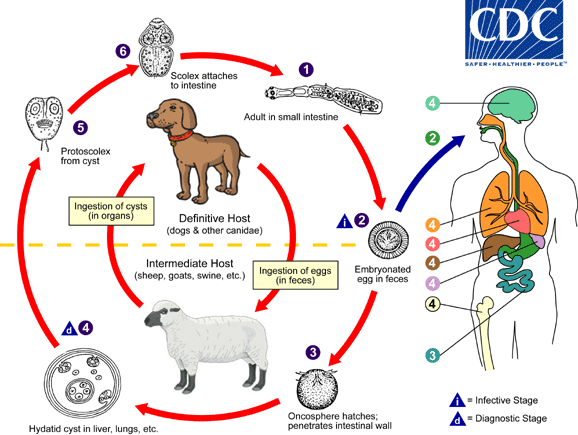Hydatid Disease in Ayacucho, Peru: Our next project. Part I (Gross picture alert)
This is a photomicrograph of an adult tapeworm, Echinococcus granulosus. It is tiny, only 3-6 mm long.

However, it can cause a world of hurt.
E. granulosus, in a larval form, causes cysts to form, generally in the liver and lungs.



A cyst? What's the big deal?
The big deal is that they can grow quite large. So although they are not malignant masses, they can put pressure on surrounding tissues and cause organ dysfunction. Additionally, the cysts are filled with a fluid, that if it leaks out, causes acute anaphylaxis, possibly fatal.
How do you get this?
You ingest an echinococcus egg. The eggs are shed in the feces of the definitive host, which is your old pal, the dog. The normal intermediate host is a sheep. Because they eat grass, they have a high likelihood of ingesting an egg in those places where the parasite exists. When the sheep are slaughtered, the offal (guts) is tossed on the ground, and the dogs eat it, completing they cycle.
In part II, we explain this cycle, and how humans become intermediate hosts. Stay tuned!



















